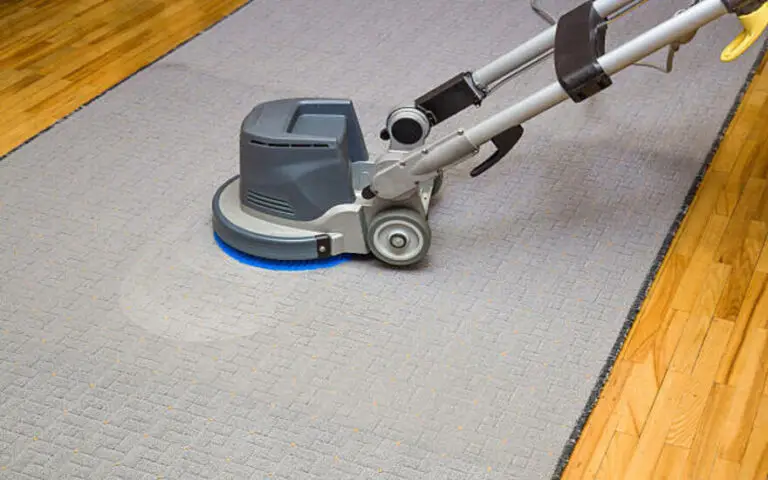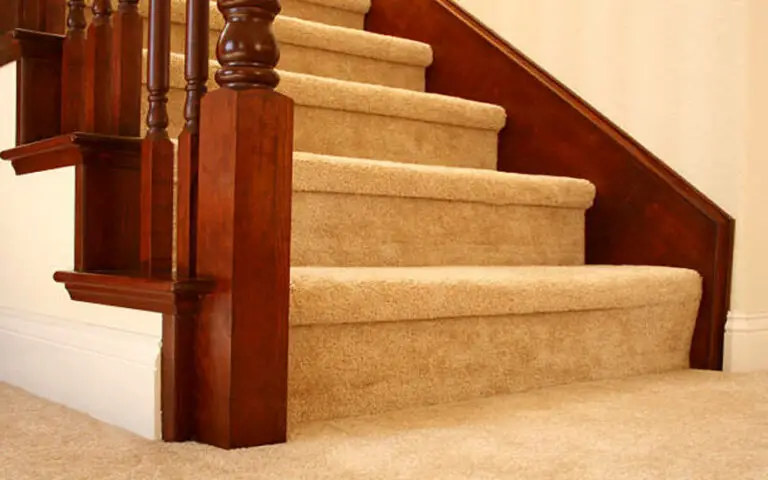In this blog post, I’ll explore how carpets can help make a room warmer and look at some of the best rugs to achieve that cozy feeling.

What is Carpet R-Value?
When it comes to carpets and their warmth, insulation is measured by what’s called the R-value. This R-value measures a material’s thermal resistance and calculates how much a material can resist heat transfer. Carpeting has a higher R-value than any other flooring material, meaning it has an excellent heat resistance and can retain more heat in a room.
Experts calculate the R-value of the carpet and padding together to arrive at the total insulation value of the flooring. Research by Wools of New Zealand found that carpet provides around ten times more insulation than hard floor coverings, making it one of the best materials for retaining heat in your home.
Does Carpet Retain Heat Better Than Other Flooring Materials?
As mentioned, carpet provides around ten times more insulation than hard floor coverings. Carpet is also an excellent insulator and does a much better job of retaining heat than other flooring materials. Carpet can provide up to 25 percent more thermal insulation than hard floors, which makes it an excellent choice for those looking to reduce their energy costs.
Carpet can also be beneficial in areas with colder climates, as the extra insulation can help to keep a room warm even during the coldest winter months. Additionally, carpet can reduce noise levels in a room, making it an ideal choice for those who need a quiet and peaceful space.
What is the Thickness of the Carpet Pile?
The carpet pile’s thickness is a significant factor in determining how much heat it can retain. The thicker the bank, the greater the insulation it can provide. A high-pile rug is usually recommended for bedrooms as it will keep your room warmer than a thinner rug or no rug at all.
When looking for a carpet, consider its pile height, as this will affect how much heat it can retain and how warm your room will be. Additionally, some rugs are designed to be better at keeping heat than others, so do your research before purchasing.
7 Factors Can Affect Heat Retention
Regarding heat retention in a room, several factors can affect how much heat is retained. Carpet R-Value, carpet thickness, type of carpet, color, underlayment, room size, number of windows, and air circulation all contribute to how much warmth is kept in the room.
1. Insulation
One of the critical factors that can affect how well a carpet retains heat is its insulation value. A rug is an excellent insulator, meaning it can’t conduct heat and isn’t a heat source. However, the carpet does help reduce energy costs in heating and cooling when there is a temperature differential between the indoor air and that under the floor.
It also helps to maintain the heat in a room by reducing heat loss, which makes the floor colder. While carpet won’t create any warmth, it can help keep existing warmth in the room longer.
2. Carpet Type
When it comes to carpet type, the materials used, as well as the texture and pile of the carpet, are all factors that can affect the heat retention of a room. Whether you choose a synthetic or natural fiber carpet, each has its benefits and drawbacks when keeping a room warm. Synthetic fibers are more durable and stain resistant but can sometimes be less effective at retaining heat.
Natural fibers like wool are often more expensive but have excellent insulation properties. The thickness of the carpet pile is also essential; carpets with a thick pile provide better insulation than those with a low pile. Ultimately, it’s necessary to research and consider all these factors when selecting a carpet for your home.
3. Carpet Color
When it comes to carpet color, you have plenty of options. The market is flooded with warm carpet colors like beige, tan, yellow, browns, reds, and a friendly grey carpet. Even though the color of the mat won’t create any direct warmth, it can help to retain heat better than other flooring materials.
Darker carpets can absorb more light and heat than lighter ones, which helps keep the room temperature warmer. On the other hand, more delicate rugs can reflect light and heat away from the room. So depending on your needs and preferences, you can choose a carpet color that will help to keep your room warmer or cooler.
4. Underlayment
Underlayment is an essential factor when it comes to heat retention. It can add extra insulation to your carpet, helping to reduce heat loss. The type of underlayment you choose will depend on the type of carpet and the room you’re installing it in. For example, thicker padding will provide more insulation than thinner padding.
A higher-quality underlayment will typically be denser, providing more insulation than a less expensive option. Ultimately, choosing the proper underlayment for your project can help to maximize the heat-retaining properties of your carpets and help to keep your home more comfortable all year round.
5. Room Size
As I mentioned before, the size of a room can affect how much heat is retained. Larger rooms might have more cold spots since the heat doesn’t circulate as well as in a smaller space. Similarly, a room with a high ceiling can trap heat near the top, meaning it will be cooler near the floor.
Considering these factors when installing carpet is essential, as they can affect how well it retains heat. Additionally, if you want to save energy and keep your home cooler in the summer, installing carpets in larger rooms can help reduce cooling costs.
6. Number of Windows
The number of windows in a room can also affect heat retention. If a room has more windows, more heat will escape out of the room. While having windows is important for natural light and ventilation, it’s essential to ensure that the windows are properly sealed and insulated to help maintain temperatures.
This can be done by installing double-paned windows with a Low-E coating or adding weather stripping and insulation around the window frames. Additionally, heavy curtains or drapes can help to reduce drafts and hold in heat during the winter months.
7. Air Circulation
Air circulation plays a vital role in the heat retention of a room with carpet. Poor air circulation can cause a room to become stuffy and stagnant, leading to an increase in humidity, which can reduce the insulation’s effectiveness. On the other hand, good air circulation will help keep the air fresh and reduce humidity levels, which can help ensure that your carpet retains heat more effectively.
You can improve air circulation in your home by providing proper ventilation and using fans or other devices to move air around the room. Additionally, it would be best to consider placing your furniture away from any air vents or radiators, as this will help to ensure that there is not too much hot or cold air directed at one area.
Which Types of Carpet Retain Heat Best?
Regarding which types of carpet retain heat best, there are a few factors to bear in mind. The first is the carpet’s r-value, which measures its resistance to heat transfer. The higher the R-value, the better the carpet insulates and retains heat.
Additionally, rugs with a thicker pile will retain heat better than those with a thinner stack. Furthermore, certain types of carpets, such as wool or nylon, are known for their better insulation properties. Finally, the color of the carpet can make a difference, too; darker colors will retain more heat than lighter colors.
All these factors should be considered when choosing a type of carpet for your home that will provide maximum warmth retention.
What Are The Benefits of Installing Carpet?
Installing carpets in your home has a host of benefits. It can help to retain heat better than other flooring materials, making it ideal for those who want to keep their rooms warm during the cold winter months.
Carpet also provides an excellent insulation value, meaning less energy is needed to maintain a comfortable temperature in the room. The type of carpet, its thickness, color, and underlayment all impact its heat retention capabilities.
Carpet also provides a softer, more comfortable surface for walking on and can even reduce noise levels in the room. Lastly, carpet offers various colors and textures that can enhance any room’s aesthetic appeal.
Are There Any Drawbacks to Installing Carpet?
Although the carpet can help warm your home in the winter, it has a few drawbacks. One downside of having carpet is that it is not as easy to clean as other flooring options. Carpet can also be more expensive than other flooring materials requiring more regular professional cleaning and maintenance.
Additionally, carpets absorb moisture, leading to mold and mildew growth if not adequately dried out. Finally, carpets often require an underlayment to provide adequate soundproofing and insulation.
Although these are all potential drawbacks, they should not deter you from considering carpet for your home; when installed correctly and maintained properly, carpet can be an excellent option for keeping your home warm in the winter.
Summary
In conclusion, the carpet does make a room warmer. It has a higher R-Value, which means it resists heat transfer better than other floor coverings. The thickness of the pile and the type of carpet can also affect how much heat is retained. Additionally, insulation, carpet color, underlayment, room size, number of windows, and air circulation can influence how much warmth a carpet can provide.
Natural fibers retain heat, darker colors, and wool carpets are better. Installing carpets can provide many benefits, like sound absorption and comfort, but it is essential to consider the potential drawbacks, such as staining and difficulty cleaning. Overall, carpets are an excellent way to make a room feel warmer and more inviting.




![Memory Foam Carpet Pad Vs Rebond? [Updated Comparison] 5 Memory Foam Carpet Pad Vs Rebond? [Updated Comparison]](https://homequeries.com/wp-content/uploads/2022/03/Memory-Foam-Carpet-Pad-Vs-Rebond-768x480.jpg)
